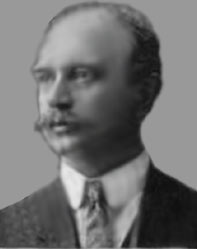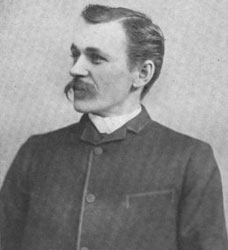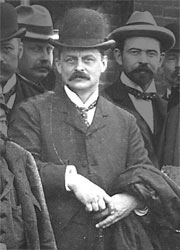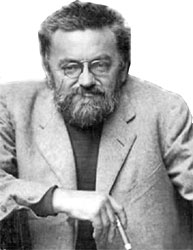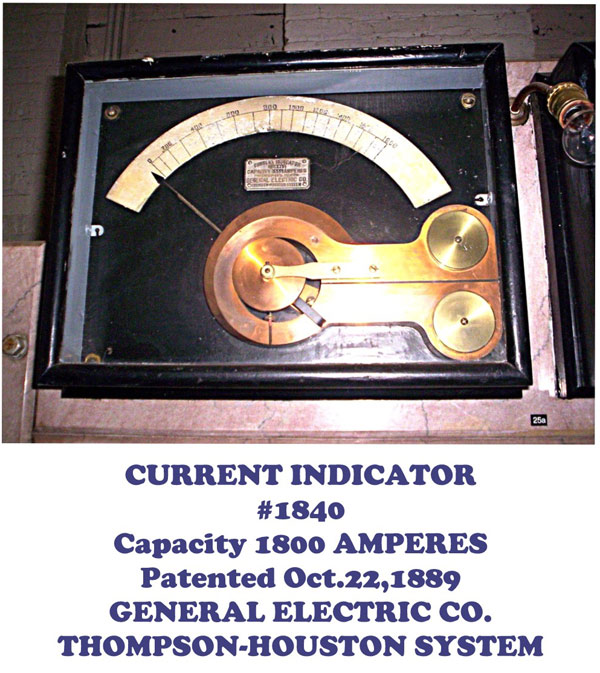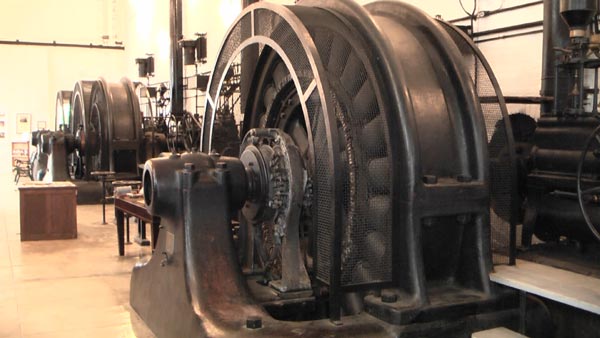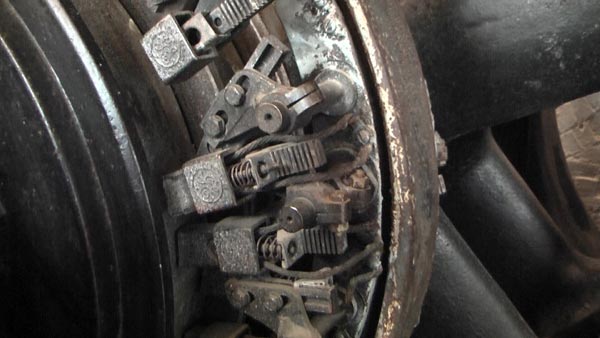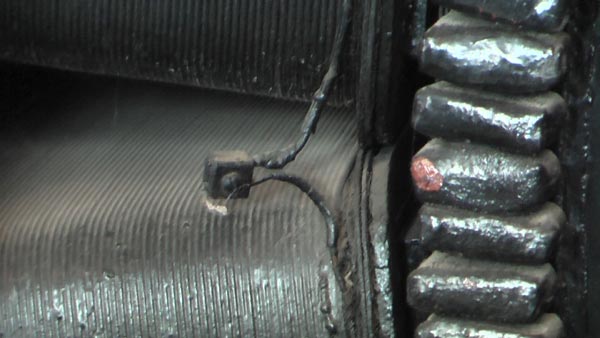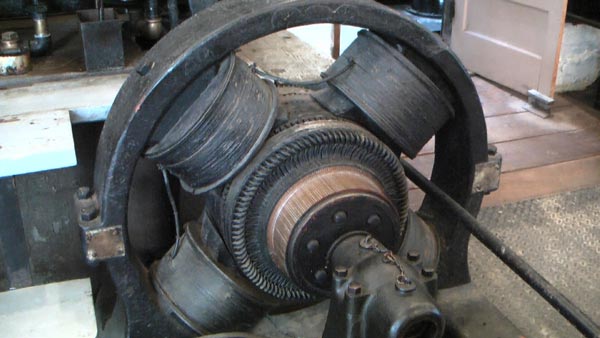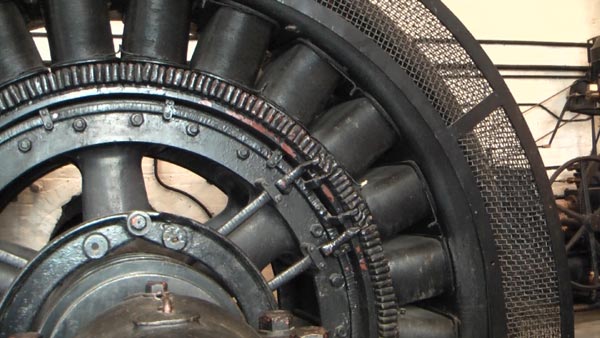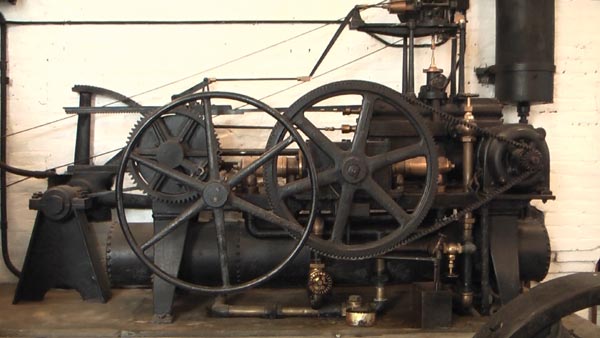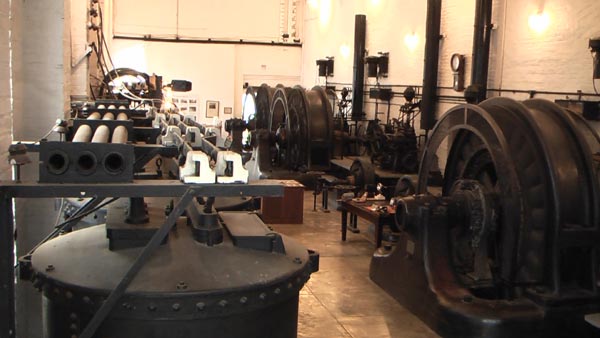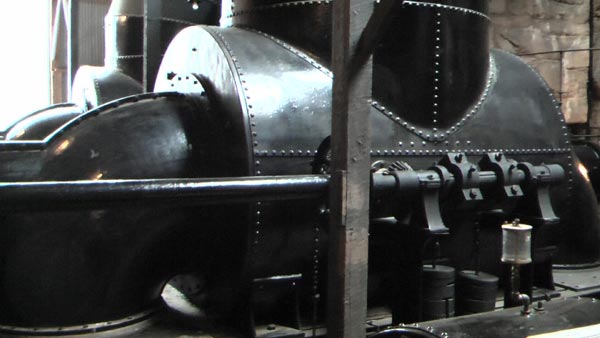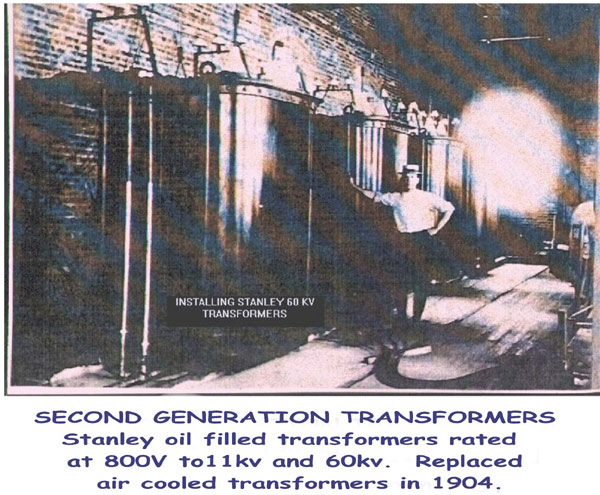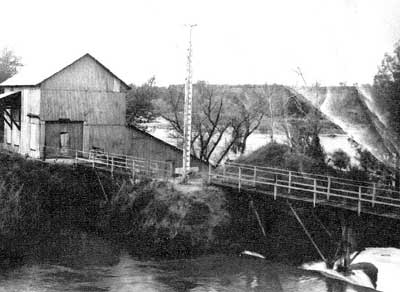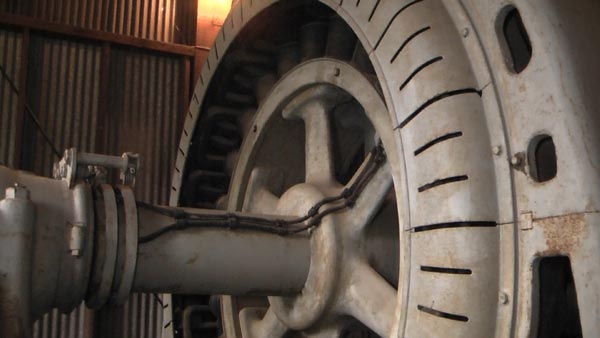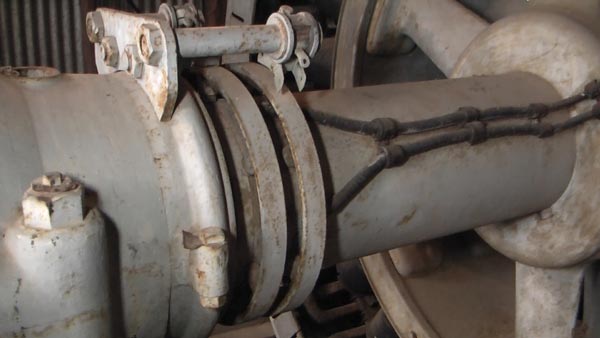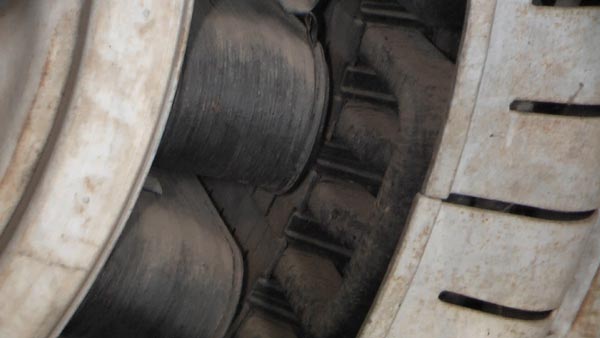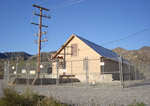
The
Folsom Power Plant 1895

The Folsom Power
House and transformers. Folsom, California
(Notice the round port on the 2nd floor which allowed for the original
Stanley air-cooled transformers)
The Folsom Power House was one of the earliest alternating current power plants in the United States. In 1895 it opened and operated as the longest transmission lines of any power plant in North America. It produced power and sent it 22 miles to Sacramento. That was the longest power transmission in the U.S. until that time. Experimental single-phase alternating current power stations were first built in US in the mid 1880s. Ten years later the work of many engineers culminated into the work at the Folsom Power House, the facility was the one of the first equipped with three phase 60 cycle power, the same type of power we use today. To read more click on the link to the California Parks website below. For more photos see the lower part of this page.
The powerhouse is open for free visitor tours Wednesday-Sunday, 12pm-4pm.
Group tours can be scheduled at (916)985-4843
About this Power Generation Site:
Notable features: First commercial 60 cycle 3-phase power system (now our modern system), was the farthest commercial power transmission until the next year (1896), when Niagara Falls power was transmitted using a GE system to Buffalo from the 1895 Westinghouse powerhouse.
Frequency: 60 cycle
Three-Phase, Alternating Current
Power Transmission Length: 22 miles at 11,000 volts using #1 wire
Power system built by: General Electric
Notable Engineers: Elihu Thomson (generators), William Stanley (original transformers), Dr. Louis Bell (became chief transmission engineer)
Maximum Power Output: 3000 kW
For photos of the Folsom Powerhouse see below.
Watch the videos of the generators and transformers below:
Generator and Turbine Areas: (9:24 min.)
Transformers and Power Transmission Lines: (4:30 min.)
Switch Gear and Lower Power House: (7:37 min.)
The General Electric Alternating Current Team in 1895:
|
Dr.
Louis Bell: Designed the power transmission system.
|
Almirian
Decker: Worked on early 3 phase generators for General Electric
|
Elihu
Thomson: Worked on the first General Electric 3 phase AC generators
|
|
William
Stanley: Designed the earliest transformers
|
Charles
P. Steinmetz: Improved three phase power technology through
mathematics and design
|
1. POWER HOUSE CONTROLS
Switch board built with Tennessee marble
|
This ammeter is non-shunted, it takes the full load from bus bar. Ammeter photo by Bill Henning
|
The ammeter, another invention of the great Elihu Thomson.
2. THE GENERATORS (Alternators)
The generators were built in Schenectady, New York.
Brushes: brush carrier, brush holder, feed spring (these were burned by an overload just before closing the plant)
See more about this burned up generator in the end of the video above.
Left: Winding bars and field coil splice Right: Four pole DC Excitor, most likely shunt wound
Name Plate:
GE Alternating current generator Type AP No 1376 Class 24 760 800 Form A
Volts no load -- full load 830 Amperes 542 Speed 300 Patented Jan 13 1880 Oct 10 80 March 25 84 Apr 222 89 March 4 90 Marc 14 1892 Apr 4 82 Nov 14 1892 Patents applied for General Electric Co. Schenectady, N.Y. USA
One of North America's first commercial AC generators!
Lombard Governor
Wide view of the generator room
Half of the motor genset -3 phase (this is the one in the next photo above on the right) originally put in for the lower powerhouse to energize the field coils and later on this provided standby DC power.
The patent drawings for Elihu Thomson's three phase generator in 1894
3. TURBINES
One of four main turbines, has gearing for the wheels, gears used to maintain speed.
4. TRANSFORMERS
Originally in 1895 the plant was equipped with Stanley air cooled transformers (aka air-blast transformers)
The original transformers were replaced with Stanley oil filled transformers in 1904.
AN ADDITION TO THE SECOND GENERATION OF TRANSFORMERS
These 11kv (oil filled) Westinghouse transformers were added in 1917 to permit increasing the 60kv output of upstairs Stanley transformers by combining their 11kv and 60kv windings.
3rd Generation Transformers are locted outside. (left side of photo)(800v, 60k. & 100kv)
5. LOWER POWERHOUSE
|
|
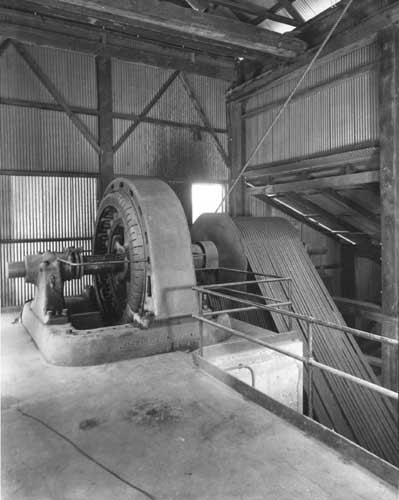 |
A new generation of AC generator 1900:
DC field slip ring (the field was on the rotor) wires carry DC power from the rings to the field coils
Left: Field Coils on the left, stator on the right. 3 phase Right: Shooting the interview with Bill Henning, PH Docent see the videos at the top of this page.

Folsom Power Houses (upper and lower) as seen from across the River
Why is the Folsom Powerhouse no longer used?
The Powerhouse was no longer needed when it was decided to construct a larger dam in 1952. In the photo below one can see the old stone dam which was blown out during construction of the new dam in the background.
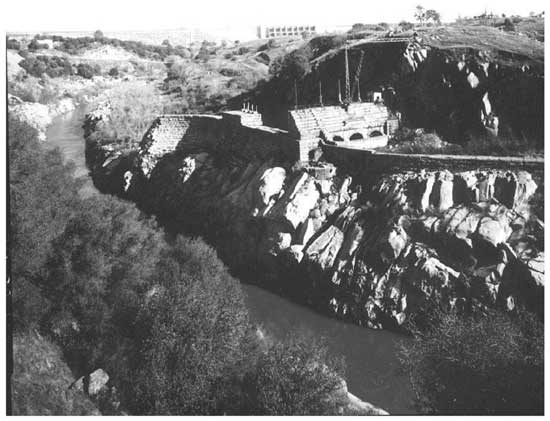

Folsom Lake is created by the modern hydroelectric dam that replaced the historic Folsom Power House. This lake is formed by the American River and extends into the foothills of the Sierra Nevada mountains in central California. The river is fed by an enormous watershed that peaks at the mountains just west of Lake Tahoe.

The top of the watershed is on the other side of the mountains here in the Sierra Nevada.
Sources:
Technical information by Bill Henning - Power House Docent, with additional assistance by Steve Normandin and Rick DeLairPhotos
Michael Whelan
Schenectady County Historical Society
Great Barrington Historical Society
Edison Tech Center, Schenectady, NY
A video which includes Folsom and early AC power developments elsewhere:
Other early power plant links:
|
Mechanicville Power Station, Mechanicville, New York 1897 |
|
|
Schaghticoke Power Station and Steinmetz's monocyclic power experiment |
Great Barrington 1886 The first AC power distribution system using transformers |
Photo/Video
use:
Commercial entities must pay for use of photos/graphics/videos in their
web pages/videos/publications
No one commercial or public is allow to alter Edison Tech Center photos/graphics/videos.
Educational Use: Students and teachers may use photos and videos for school.
Graphics and photos must retain the Edison Tech Center watermark or captions
and remain unmanipulated except for sizing.
Permissions
- Videos: We do not email, FTP, or send videos/graphics to anyone
except in DVD form. Payment is needed for this service. See our donate
page for pricing, and our catalogue
for a listing of videos on DVD.
Professional video production companies may get videos in data form with
signed license agreements and payment at commercial rates.
copyright 2010 Edison Tech Center

